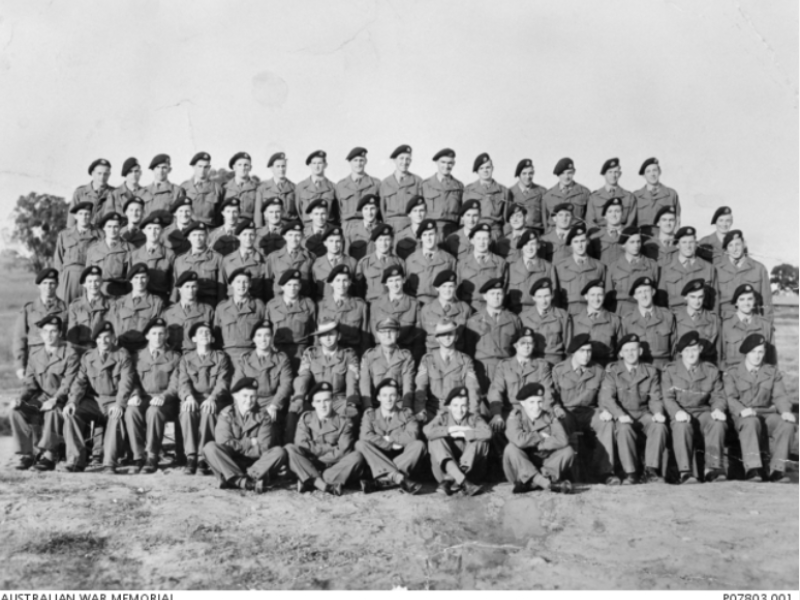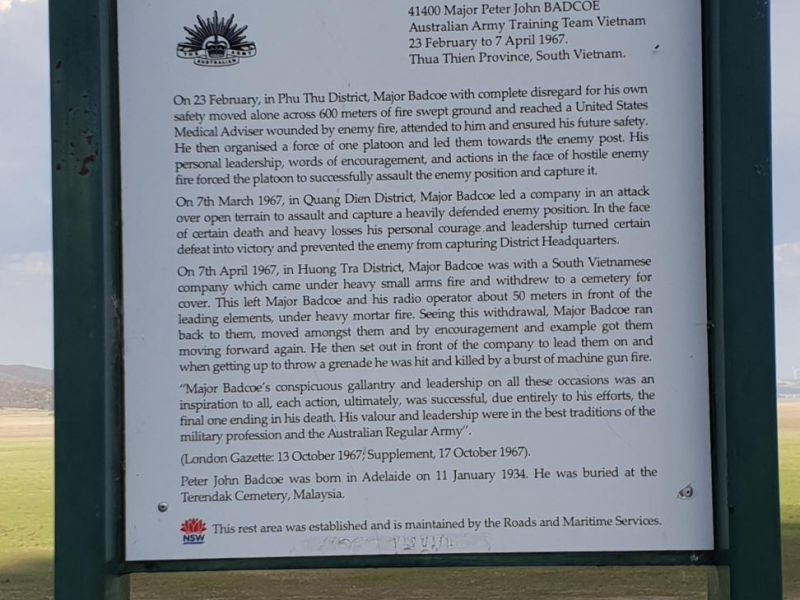Major Peter John Badcoe VC, Australian Army Training Team Vietnam - part 2
But he gradually grew disillusioned with the conduct of the conflict in Vietnam. He began to view it as “an unwinnable war”. After napalm airstrikes against a village occupied by the Viet Cong left 40 civilians dead or wounded, Badcoe spent two days trying to help survivors. The experience deeply disturbed him.
Nevertheless, in three separate actions in early 1967 he performed feats of individual heroism which earned him the Victoria Cross.
On the 23 February, during a small operation in Phu Thu district, he ran across some 600 metres of fire-swept open ground to assist a territorial platoon. Taking charge of the unit, Badcoe led it in a frontal attack. He single-handedly charged an enemy machine-gun post and shot the crew. He also retrieved the body of an American adviser killed in the action, and then braved further enemy fire to rescue another who was wounded.
On 7 March, the district headquarters of Quang Dien near Hue came under attack from a strong Viet Cong force. While commanding the province's reaction company, Badcoe organised and led a series of fierce assaults which drove out the Viet Cong and saved the headquarters.
One month later, on the 7 April 1967, he wrote to his wife: “It’s time I came home. I'm getting bitter and cynical … I can see more and more good about the Vietnamese and less and less about the US advisers.”
This was his last letter home.
That same day he learned that the Reaction Company of the South Vietnamese 1st Division was in difficulty near the hamlet of An Thuan. Knowing that the company would be denied air support unless advisers were present, he drove a jeep there with a US Army sergeant.
Finding that the force had fallen back, he took charge and rallied the men in the face of withering fire. Crawling ahead, he made several attempts to silence a machine-gun with grenades. At one stage the American sergeant pulled him out of the line of fire. Rising again to throw another grenade, Badcoe was shot and killed instantly.
For his feats of gallantry and leadership, he was posthumously awarded the Victoria Cross and the United States Silver Star. The Republic of Vietnam awarded him its National Order, three Crosses for Gallantry, and the Armed Forces Honour Medal.
Peter Badcoe had been an inspiration to his Australian, Vietnamese, and American comrades-in-arms. Attendance at his memorial service in Hue was the largest that could be recalled for any allied soldier.
He had confided to his wife that he believed military funerals were horrendous for families, so he preferred to be buried in Terendak military cemetery in Malaysia. His headstone bears the simple, poignant inscription provided by his widow: “He lived and died a soldier”.
Ashley Ekins, Historian, Military History Section
Image: Group portrait of 14 National Service Training Battalion. In the second row from front, centre, are three officers of the Royal Australian Artillery, including Second Lieutenant Peter John Badcock.
- Australian War Memorial https://www.awm.gov.au/collection/C256112

 Australian War Memorial
Australian War Memorial